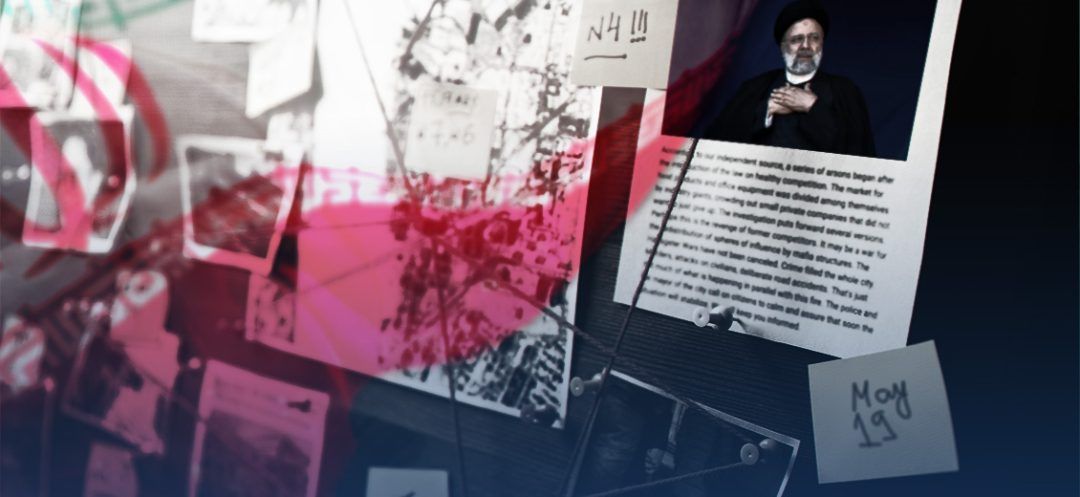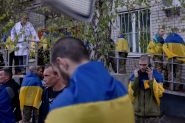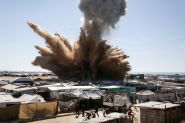
The death of the Iranian president, Ebrahim Raisi, seems to be the result of technical failures, according to the questionable forensic investigations. Nonetheless, the technical failures unveil the hidden realities of a decaying dictatorship that has nothing to offer after 45 years of undisputed Islamic totalitarianism, failed governance, State terrorism, systematic violation of Human Rights and outright politics of destabilization throughout the larger Middle East. Aside from its native roots within the Iranian religious and political landscapes, the ideological genealogy of Iranian Islamism traces back to the Muslim Brotherhood, founded in 1928 by Hassan al-Banna in Egypt.
Partaking of the same ideological plot epitomized by the popular doxa, "Islam is the solution," Islamism made its tumultuous entry into the contemporary political scenery through Islamic totalitarianism, political violence, terrorism, organized criminality, religious anathema and rejuvenated bouts of Islamic imperialism. While drawing on Muslim scriptures and syncretistic political millenarianism, Islamist ideologies are wedded, by definition, to violence and religious warrants which account for their nihilistic political soteriologies. Whatever the idiosyncrasies of Islamist politics, they all draw their inspiration from Koranic scriptures and Hadiths. Their commonalities crumble when they start framing their political strategies predicated on various geopolitical and sectarian variables and priorities.
The Iranian Islamic revolution, led by Ayatollah Moussa al Khomeini, turned out to be the first Islamic revolution of the contemporary ages, which fulfilled the mandates of the "Islam is the solution" motto. Being Shiite and Iranian, it identified with Islamic and pre-Islamic millenarianism. It served as leverage for a national revolution and a regional subversion strategy, aimed at creating Middle Eastern Shiite dominions controlled by Iran. Hence, we understand the nexus between militant Islamism, Islamic imperialism and the politics of subversion throughout the Near East and the Gulf and the renewed leverage in international politics. However controversial and brittle Iranian imperial politics, Iran has become a major regional player to reckon with, deal with and fight against. The meteoric rise has always been fraught with congenital weaknesses due to the undermined legitimacy of Islamic totalitarianism in a country with a powerful pluralistic and syncretistic pre-Islamic legacy, inherently allergic to the dictums of a political theurgy.
We should add to it the dismal failures of a corrupt and inept governance which have led to the glaring financial and economic debacles, diffuse corruption, oligarchic entrenchments, monumental ecological disasters, rural desertification, dramatic rise of urban squalor and mass poverty (Tehran shantytowns count 12 million inhabitants) and pervasive societal anomy (i.e. 4 million untreated drug addicts…). The revival of Zoroastrian feasts, the rehabilitation of Zoroastrian eponyms, the massive de-Islamization amongst youth and the rejection of the sharia-mandated vestments have set the pace for an incremental revolution that questions not only the regime, but its Islamic meta-narrative. Iran features the first post-Islamic society succeeding the unravelment of the first Islamic revolution in contemporary times.
The "accidental" death of Ebrahim Raisi, one of the most reviled figures of the murderous Islamic autocracy, and the jubilation it elicited amongst Iranians, unveils the fraying of the revolutionary saga and the deepening political rifts within the power configuration created by the Islamic revolution. Drawing on the Bolshevik "power technology," based on the symmetry and insidious struggles between the different power centers, the system is engineered and managed by the religious autocracy and its praetorian guards which evolved an integrated scheme based on institutional spoils, vested political and financial interests, and a reticular system of controls and repression mechanisms upholding the conglomerate. The myths are debunked, and the religious and political aura of the threadbare revolutionary saga is defamed and utterly discarded by a disillusioned post-revolutionary generation who feels totally estranged from whatever this revolution stands for.
The emerging feuds display the structural weaknesses of a dying political theodicy and its blatant systemic contradictions and ideological fallacies. The religious autocrat status as the ultimate arbitraging authority (Vilayet el-faqih) is undermined by failed governance, corruption, political murder, nepotism and the moral bankruptcy of the clerical bureaucracy. The hypothetical succession of Mujtaba Khamenei to his father undermines the credibility of the Iranian regime, showcases the internal power rivalries, and displays the inner dynamics of self-destruction and the inability of the system to redeem itself. The metastatic cancers of a decaying social and political order account for the meteoric rise of the aggressive regional power politics, the determination to destroy whatever is left from the unraveling regional order, and the generalization of civil strife as an endemic social and political predicament. The politics of destabilization are a defining feature of the Iranian regime: the external destabilization is the functional equivalent of the eroding internal legitimacy. However, a rising political fact seems to upend the regime’s conventional survival strategy: the Iranian civil society welcomes any external military intervention that helps destroy the decomposing dictatorship.
Read more



Comments